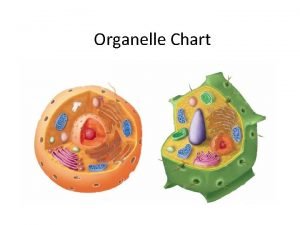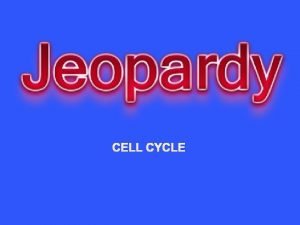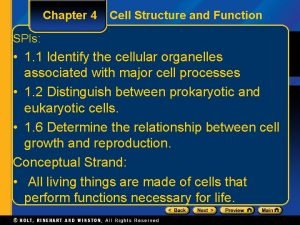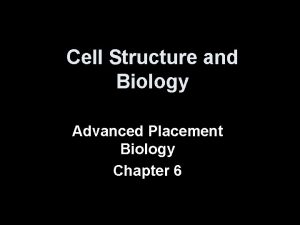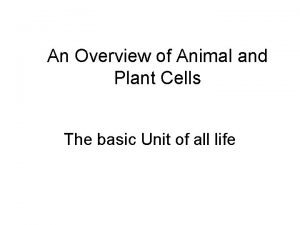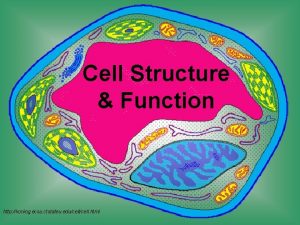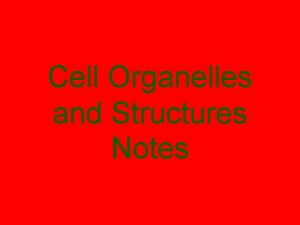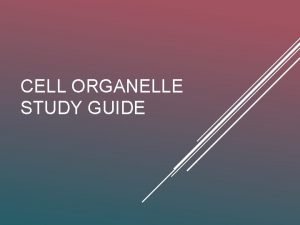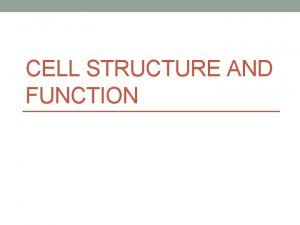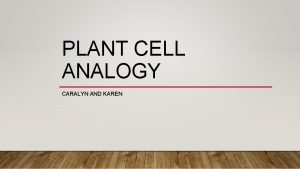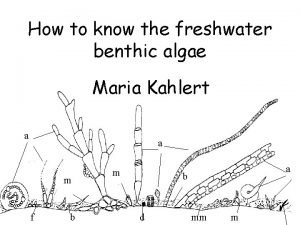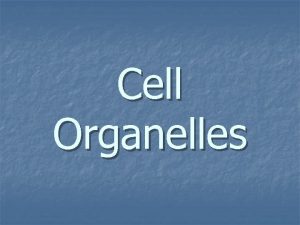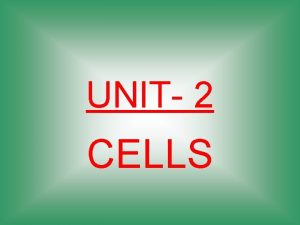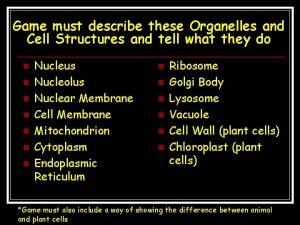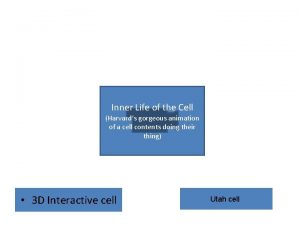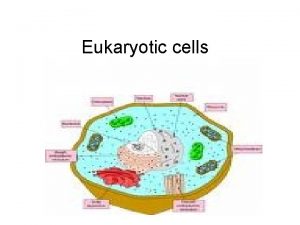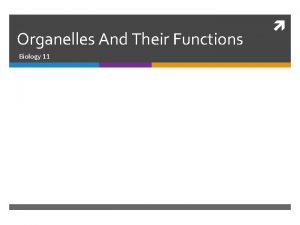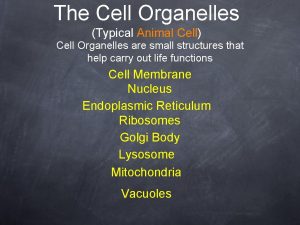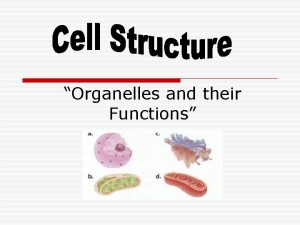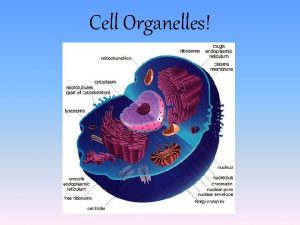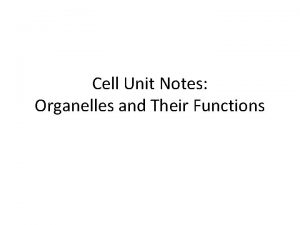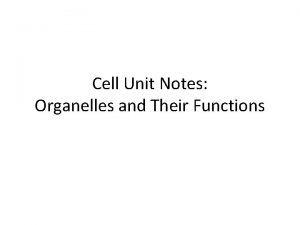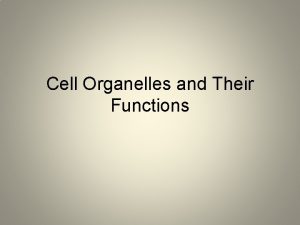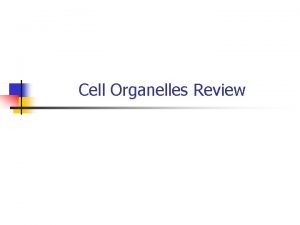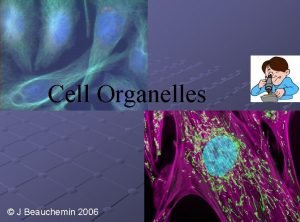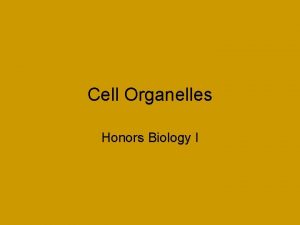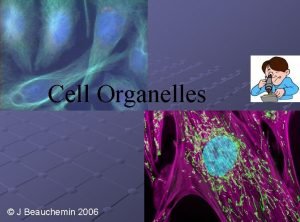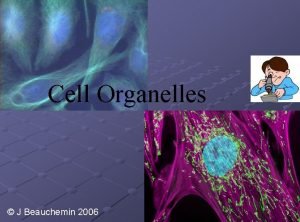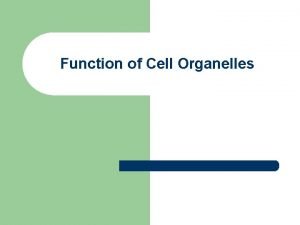Parts of the Cell Organelles and their functions



















- Slides: 19

Parts of the Cell Organelles and their functions…


Remember Science 8? . . . The cell as a city? The cell as a school? Ah… those were the days… Things are about to get real!

Cytoplasm • Contains a cytoskeleton (microtubules & microfilaments) • Cytoskeleton supports organelles & constantly changes • Protein strands + water filled spaces = gel like consistency

Nucleus • Largest organelle • Double layered membrane encloses it • Large molecules pass in and out of nucleus through pores • Controls metabolic/cell functions • Contains chromosomes (DNA) • Also contains the nucleolus r. RNA for ribosome formation

Ribosomes • Small, dense granules • Contain r. RNA & proteins • Involved with protein synthesis

Where can we find Ribosomes? 1. Rough ER (Endoplasmic Reticulum) • Make proteins transport to Golgi • Golgi repackages & sends out of cell 2. Free Floating in the Cytoplasm • Polyribosomes (chains) in cytoplasm • Make proteins for cell’s own use (ex. Enzymes)

Smooth ER • Lipid production (ex. membrane, hormones) • “Smooth” because it isn’t studded with ribosomes • Products sent to Golgi

Golgi Apparatus • Repackaging of proteins & lipids (from Smooth ER) • Releases proteins/lipids in SECRETORY VESICLE • Produces lysosomes

Lysosomes • Break down worn out organelles • Recycles old parts or food items • Many lysosomes in white blood cells • Contain hydrolytic enzymes to break down materials • Food vacuole fuses with lysosome forms secondary lysosome

Mitochondria • Produces ATP energy • Uses up O 2 & gives off CO 2 + H 2 O = CELLULAR RESPIRATION • ADP = adenosine diphosphate • ATP = adenosine triphosphate

ATP vs ADP ATP high energy ADP low energy • ADP can be converted to ATP by “gluing” an extra inorganic phosphate onto the molecule • You can “cash in” this energy by breaking the high energy bond when converting ATP ADP • ADP is fully recyclable!!

Prokaryotic vs Eukaryotic Cells PROKARYOTIC CELLS • Cell membrane • Cell wall • No nucleus • No membrane bound organelles (ex. Mitochondria, ER) • Have ribosomes

EUKARYOTIC CELLS • Cell membrane • Cell wall in plants only • Membrane bound organelles

Plant Cells are Special… • Have a cell wall • Large central water vacuole • Chloroplasts & plastids • Both plant & animal cells have mitochondria

How are these organelles related? Lysosomes & Vacuoles • Both formed by Golgi • Combine together to break down larger molecules such as food ER & Golgi • ER produces lipids (smooth ER) and proteins (rough ER) • Products sent to Golgi for packaging & release

Ribosomes & ER • Ribosomes found on ER (rough) • Required for protein synthesis Mitochondria & Chloroplasts • Mitochondria produce ATP energy • Need glucose to produce ATP • Glucose produced by chloroplasts

Which Organelle is responsible for… 1. Packaging & secretion 2. Use of hydrolytic enzymes 3. Energy production 4. Protein synthesis 5. Cell division 1. Golgi Apparatus 2. Lysosomes 3. Mitochondria 4. Ribosomes/Rough ER 5. Centrioles/Nucleus/DNA

Which organelles would you find in… 1. Photosynthetic cells 2. Pituitary gland (produces hormones) 3. Muscle cells 4. Adipose (fat) tissue 5. Pancreas (enzyme production) 1. Chloroplasts 2. Golgi apparatus 3. Mitochondria 4. Smooth ER 5. Rough ER
 Fun facts about vacuoles
Fun facts about vacuoles Cell structure and function graphic organizer
Cell structure and function graphic organizer Cell organelles structures and functions organizer
Cell organelles structures and functions organizer Cell cycle fill in the blank
Cell cycle fill in the blank Which of the following pairs contains unrelated items?
Which of the following pairs contains unrelated items? Volvox organelles
Volvox organelles Label the organelles in the composite cell
Label the organelles in the composite cell Plant cell
Plant cell Cell organelle song
Cell organelle song Golgi complex function
Golgi complex function Endoplasmic reticulum nickname
Endoplasmic reticulum nickname Cell organelle graphic organizer
Cell organelle graphic organizer Mitochondria double membrane function
Mitochondria double membrane function Cell analogy to a house
Cell analogy to a house Cell organelles
Cell organelles Cell organelles vocabulary
Cell organelles vocabulary Plant cell
Plant cell Cell organelles game
Cell organelles game Inner life of a cell harvard
Inner life of a cell harvard Centrosoma
Centrosoma
